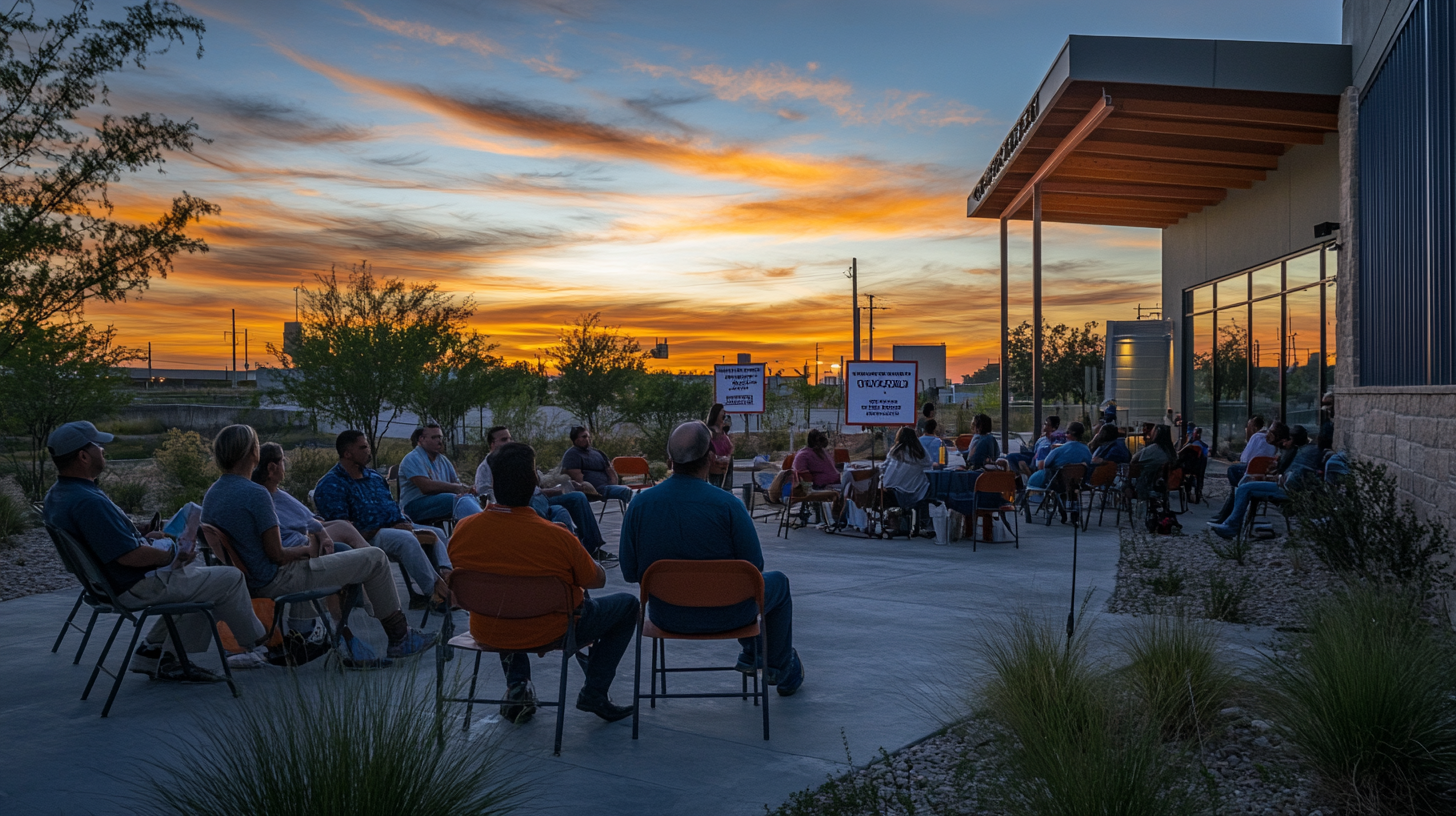2024 in Review: Galeazzi Highlights Water Shortages in the Rio Grande Valley
Dante Galeazzi, president and CEO of the Texas International Produce Association, voiced grave concerns about the severe water shortages impacting the Rio Grande Valley and its neighboring regions. Speaking at the University of Texas-Rio Grande Valley’s Vistas from Texas seminar in October 2024, Galeazzi provided a somber overview of the situation affecting the heart of South Texas. The discussion underscored the local impact and growing worries among Valley residents about their future water security.
Unpacking the Crisis: Treaty & Regional Ramifications
Galeazzi outlined how smaller cities within the Rio Grande Valley (RGV) face the daunting prospect of water rationing, similar to what Monterrey and Reynosa have experienced recently. The root of these issues lies in the state of Chihuahua’s withholding of water, which should rightfully flow to South Texas and Tamaulipas as stipulated by a 1944 United States-Mexico water-sharing treaty. Despite the agreement’s mandate for Mexico to deliver 1.75 million acre-feet of water every five years, compliance has been sporadic; the target has been met only twice in 32 years, exacerbating fears of more stringent water rationing.
The RGV is particularly vulnerable given that 90% of its fresh water supply originates from the Rio Grande River, 30% of which depends on the water from the Rio Conchos in Chihuahua. For Valley farmers, this mounting crisis translates to situation where they commence growing seasons with insufficient water reserves to see them to completion. This shortage has already led to significant agricultural losses, notably the closure of the last sugar mill in Texas.
Confronting Agricultural Challenges and Economic Shifts
The retention of water by Chihuahua not only hampers U.S. agricultural productivity but also gives rise to increased competition from Mexican producers using the withheld resources to expand their own agricultural footprint. “This shift has meant that states like New Mexico, once a leading pecan producer, have lost a substantial share of business to Mexico,” noted Galeazzi, highlighting the broader economic fallout for U.S. producers.
The consequences for local economies are stark. “The Texas Valley has already eclipsed $1 billion in agricultural losses,” Galeazzi pointed out, “most of which is felt directly in the RGV.” The ripple effect of these developments is poised to challenge numerous local industries and strain community resources.
Advanced Solutions: Infrastructure and Policy Adaptation
In light of these issues, Galeazzi urged a transformation of current strategies from mere conservation to expansive water development initiatives. The recommendation includes building reservoirs and upgrading irrigation systems to mitigate evaporation losses, emphasizing the need for federal assistance to realize these ambitious projects. “Federal aid is crucial, particularly in waiving the existing 50% cost share funding requisite,” he said. This change would enable economically challenged RGV communities to actively participate in essential infrastructure upgrades.
U.S. government’s current inability to enforce stricter compliance within the treaty’s language remains a challenge, mainly due to clauses allowing extended delivery timelines during extreme droughts in Mexico. This loophole often results in reliance on natural occurrences, such as hurricanes, to fulfill the treaty’s requirements without political intervention.
The Valley, with its diverse irrigation districts and numerous cities, increasingly recognizes the need for unified action. “Fragmented cooperation across 27 irrigation districts and about 50 cities, all interacting with a populace exceeding 1.3 million, calls for a singular, cohesive approach in negotiating and managing our water reality,” emphasized Galeazzi.
Community and Regional Resilience Moving Forward
While the intricacies of water rights between two nations must be navigated diplomatically, the RGV must also look inward to galvanize local efforts in water conservation and management. “Residents of the Valley can’t afford to wait for international agreements to catch up to the crisis,” Galeazzi said, rallying local leaders and the community to confront immediate operational inefficiencies.
In the coming years, adjusting to a changing climate and evolving agricultural landscape will demand active participation from every layer of the Valley’s communities, from individuals to municipal leaders. The emphasis on building adaptive infrastructure and modifying economic strategies may serve as a blueprint not only for South Texas but for communities nationwide facing similar adversities.
Engagement and Support for Valley Residents
To equip residents with information and resources, local governments and Galeazzi himself advocate for public forums, workshops, and consultations on sustainable water practices and policy advocacy. The community is encouraged to engage actively, sharing insights and staying informed about regional water discussions. By fostering a robust dialogue, the Valley can strive for a resilient future in managing its most precious resource.
As the natural landscape and political climate continue to evolve, the RGV stands at a critical juncture, facing an opportunity to transform challenge into strength through innovation, collaboration, and a strategic focus on sustainability.
For more information or to participate in local initiatives, Valley residents can contact the Texas International Produce Association or the University of Texas-Rio Grande Valley’s Sustainability Office.







